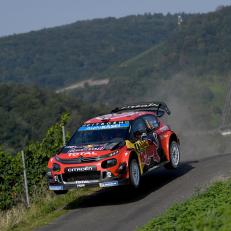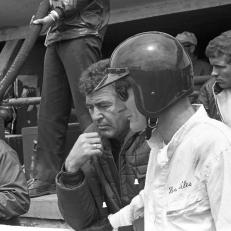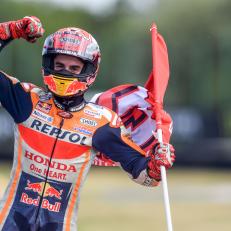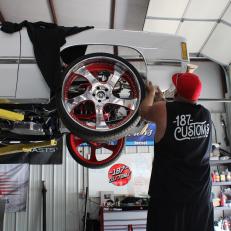The Tiny Weird World of Microcars
Microcars offered a cheap means of transport in post-war Europe and were popular until the early 1960s, by which time the European motor industry had recovered. Today they are highly sought-after and have reached cult status.
1962 Peel P50
A 1962 Peel P50, the smallest microcar ever manufactured. Built on the Isle of Man, it is just 132 cm long, 99 cm wide and weighs just 59 kilos.
1958 Shelter
A Dutch-built 1958 Shelter. Microcars are light-weight miniature vehicles, usually powered by a motorcycle engine.
Opperman Unicar T
The Opperman Unicar T was priced at £400, making it the cheapest car at the 1956 London Motor Show.
Berkeley T60
The Berkeley T60. During their road test in October 1959, The Motor Cycle Magazine described the car as "a fascinating, front-wheel drive sports car which combines economy with livelyness and suberb cornering".
AC Petite Mark II
The AC Petite Mark II in red. The AC was built from motor cycle components; it was reasonably priced and and the roomy interior appealed to the typical buyer.
BMW 600
The BMW 600. From 1957-1959 only 34,813 600s were produced, partly due to price competition with the entry level VW Beetle.
DAF 600 'Prototype 13'
A DAF 600 'prototype 13'. This is one of the secret DAF prototypes that hit the road fully camouflaged in 1957. In 1958 the DAF 600 caused a sensation with its highly advanced continuously variable transmission, known as the Variomatic
Velorex Oskar 16
The Velorex Oskar 16. The Velorex, built from 1953-1971 in the former Czechoslovakian town of Hradec Kralove, has bodywork made of vinyl stretched over a frame of welded steel tubing.
BMW Isetta 250
The BMW Isetta 250. BMW acquired a licence to build the Isetta in 1955. 170.000 units were built, including the BMW Isetta 300.
Rolux Baby VB 58
The Rolux Baby VB 58. The French two-seater was built from 1945-1948 and in France it was allowed to be driven without a driver's licence.
Velam Isetta
The Velam Isetta. The French-built Velam, produced from 1953-1956, was not a commercial success. After just 7115 units had been built, production ceased in 1957, when it had to compete with the robust and much larger 2CV.
Heinkel Kabine 154
The Heinkel Kabine 154. Heinkel manufactured aircraft before turning to scooters and microcars after World War 2.
Bambino 200
The Bambino 200 Microcar was offered with small car three-wheeled body shapes between the years 1955 and 1957.
Fuldamobil S1
The Fuldamobil S1. The new style of aluminum bodywork has been likedned by some to a tiny brother of Porsche. Only 701 S1's were produced between 1954-1955.
Allard Clipper
The 1953 British-made Allard Clipper was the first car to have a colour-impregnated fibreglass body.
1959 Ausa PTV 250
The 1959 Spanish-made Ausa PTV 250. Around 1100 were produced and in 2019 about 100 PTV's are left, of which 60 in running condition.
1958 Frisky Family Three
A 1958 British made Frisky Family Three. 'Family Three' denotes that this three-wheeled car has sufficient room for a family with two small children. It is also one of the few microcars designed by a famous studio: Michelotti.
1958 Frisky Coupe
The 1958 British-made Frisky Coupe boasted a top speed of 96 km/h (60 mph).
1953 Messerschmitt KR 175
The 1953 German Messerschmitt KR 175. The 175cc, 9 horsepower tandem seater weighs 180 kg could reach a speed of 90 km/h.
1956 JFC Delfin
The 1956 JFC Delfin miniature lorry. The car has a load capacity of 250 kg and was mainly intended for the city of Barcelona. Only nine Delfins were produced of which at present there are just four left.
Microcars
Microcars offered a cheap means of transport in post-war Europe and were popular until the early 1960s, by which time the European motor industry had recovered. Today they are highly sought-after and have reached cult status.

















